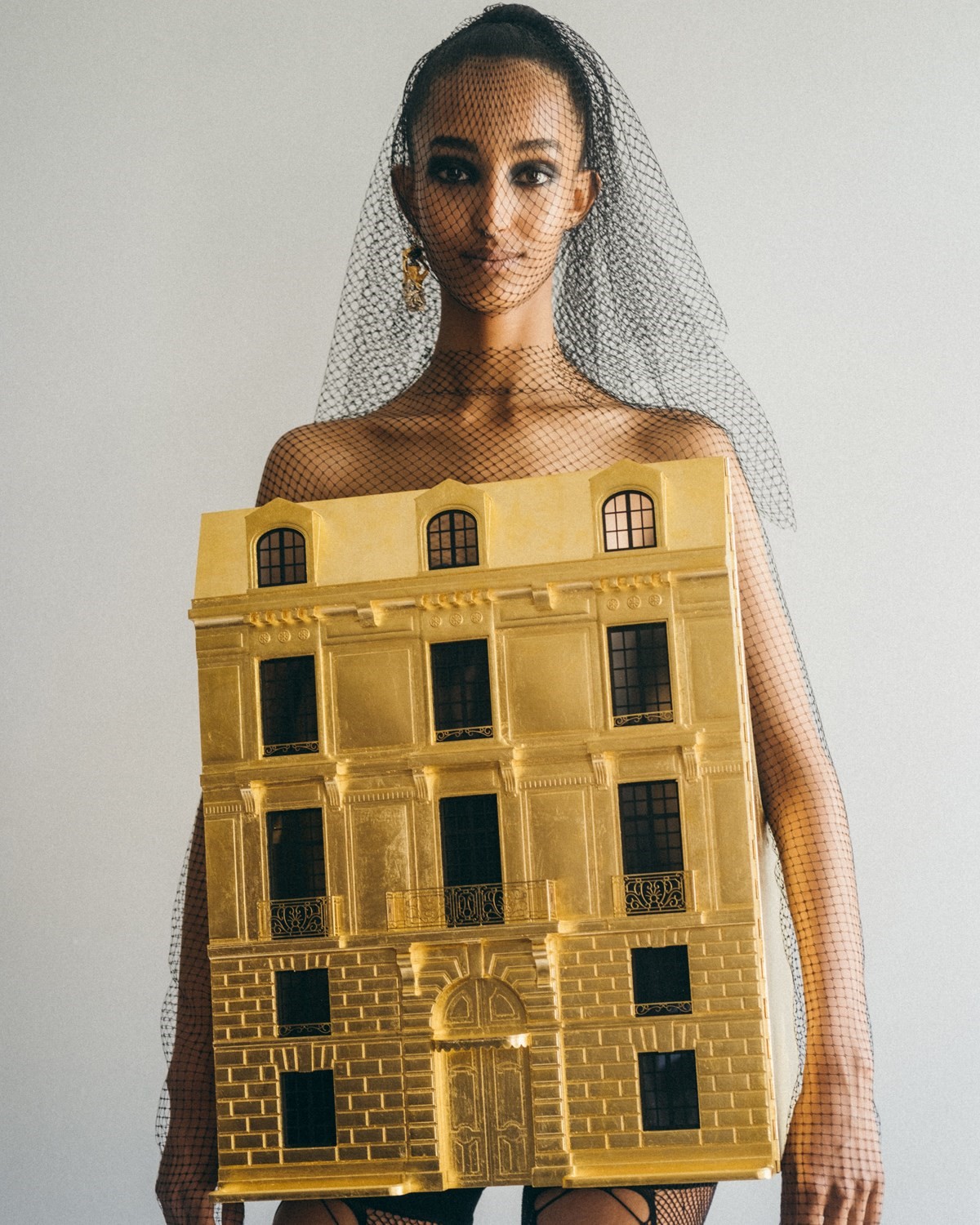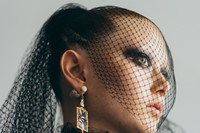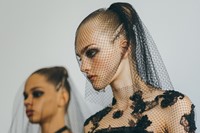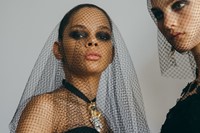Maria Grazia Chiuri designs womenswear – and she wants women to wear it. It means she thinks in certain ways about her clothes – for ready-to-wear, it is to make it just that. Direct, easy, dynamic, ready to go. But haute couture is a different game entirely, dictated as it is by the needs, musts and lusts of a cadre of devoted clientele. It is clothing on a macro scale, where minute stitches and infinitesimally small adjustments of fit create a butterfly effect of seismic change. Couture is about the individual, and individuality. “It’s not just expensive,” said Chiuri an hour before her show. “It’s an experience.”
So was the collection, the first Chiuri has ever staged in the historic salons of Dior at 30 Avenue Montaigne, which were transformed for the occasion by the feminist artist Penny Slinger in a far-reaching, all-encompassing installation that smothered walls and ceilings – it was the final hurrah before the building begins an ambitious renovation project, to make the old once again new.
Chiuri herself looked back: to Dior of course, but even further, first to the 1944 exhibition at MoMA titled Are Clothes Modern? (a counterpart, Is Fashion Modern? was staged in 2018) devised by the architect and theorist Bernard Rudofsky. In short, his answer was ‘no’ – he declared contemporary clothes “anachronistic, irrational, impractical and harmful”. Incidentally, his essay on the matter was published in 1947, the same year Dior’s romantic, backwards-glancing and ironically titled ‘New Look’ debuted, with its corsets and crinolines. But Chiuri engaged Rudofsky in a dialogue for this collection – “well, kind of,” she grinned: he died in 1988. Yet the clothes offered a riposte, inspired by Monsieur Dior’s final collection, the ‘Spindle’ line, which featured free-form drapery and was, in fact, much designed by his future successor Yves Saint Laurent. She also looked further back, to the simple drapery of the Greek peplos and chiton, rectangles of cloth draped directly on the free body, each entirely unique to the form beneath. In 1957, again, Dior named a dress ‘Caryatid’ and was inspired by the draped Greek statues of female figures. Chiuri loved the idea that they were strong women, literally holding up houses. Maybe she saw something of herself in them? She certainly allied them to a fusion of fashion and architecture, mirroring Christian Dior’s passion.

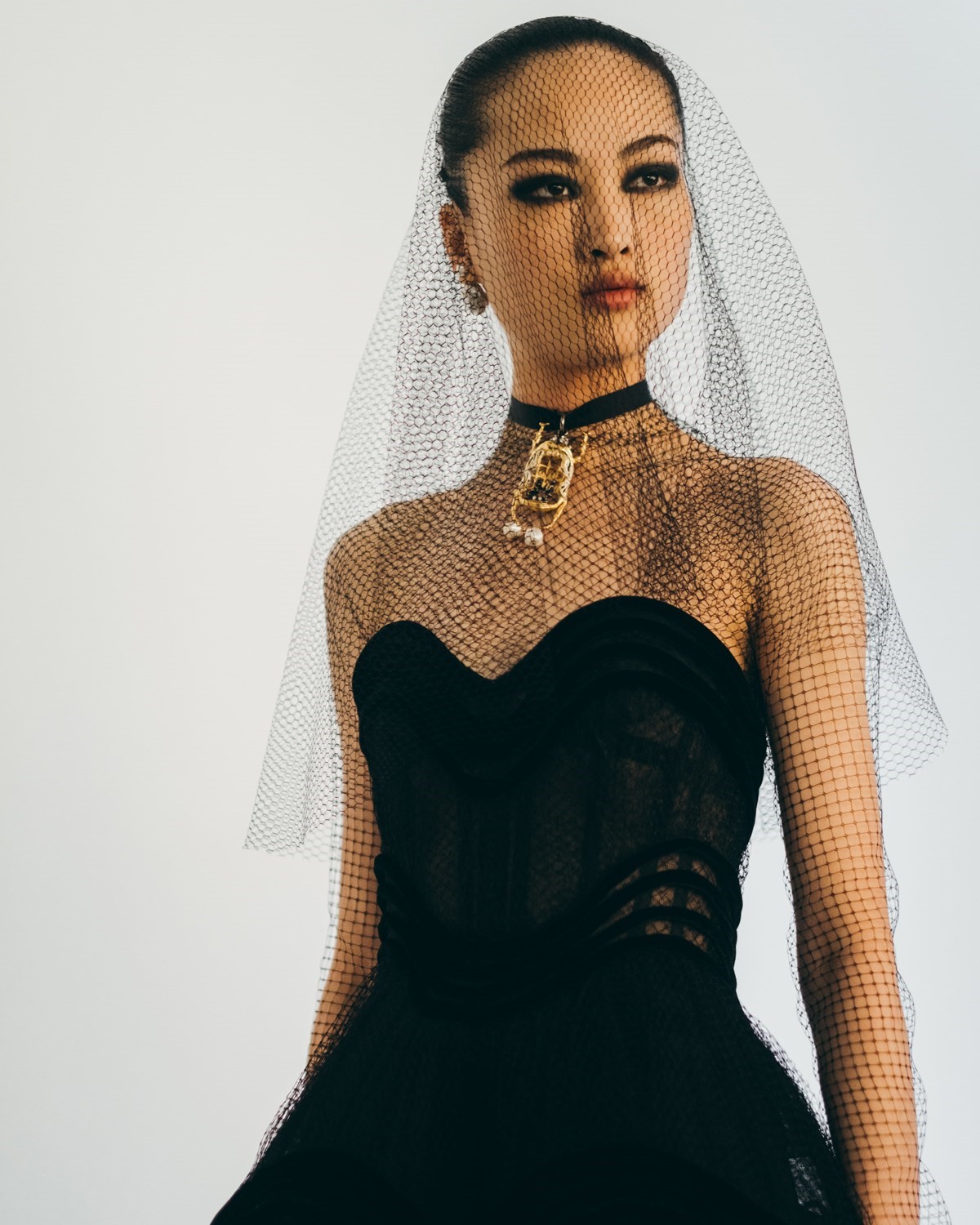
Plainly put, this couture collection was wonderful – the best Chiuri has created, with a freedom, an ease and an individuality. It was almost entirely executed in black, which was bold and brave, and laden with meaning, not least linking to Dior. “I could perfectly well design a whole collection in black or white,” Christian Dior once wrote, “and express all my ideas to my complete satisfaction”. We know mid-century haute couture through black and white imagery – which is what these dresses resembled, much of the time, to me. They were also the exact inverse of the white muslin toiles executed by ateliers to sketch out in three-dimensions the volumes of the garments, and to devise the fit for every individual client before the fabric of the garments are cut. In a sense, these were like the ghosts of dresses about to be created – the idea that these are ephemeral proposals, the shadows of the dresses that will be made for Dior’s clientele, in lots of other colours. And today, black is an especially loaded colour, symbolic of the #TimesUp movement, of a new breed of contemporary feminism that will not be silenced.
The final dress – much-Instagrammed, much-remarked upon – was a collaboration with Penny Slinger again. It was a golden edifice of Maison Dior as a dress – Chiuri herself stated it was an artwork, because it was Slinger’s vision, created by the ateliers. “And each of these clothes is, in some way, the house of Dior,” she said. “It is very symbolic, I found the idea very poetic. Clothes are the first home for our bodies.” Not new, not old, but timeless.
